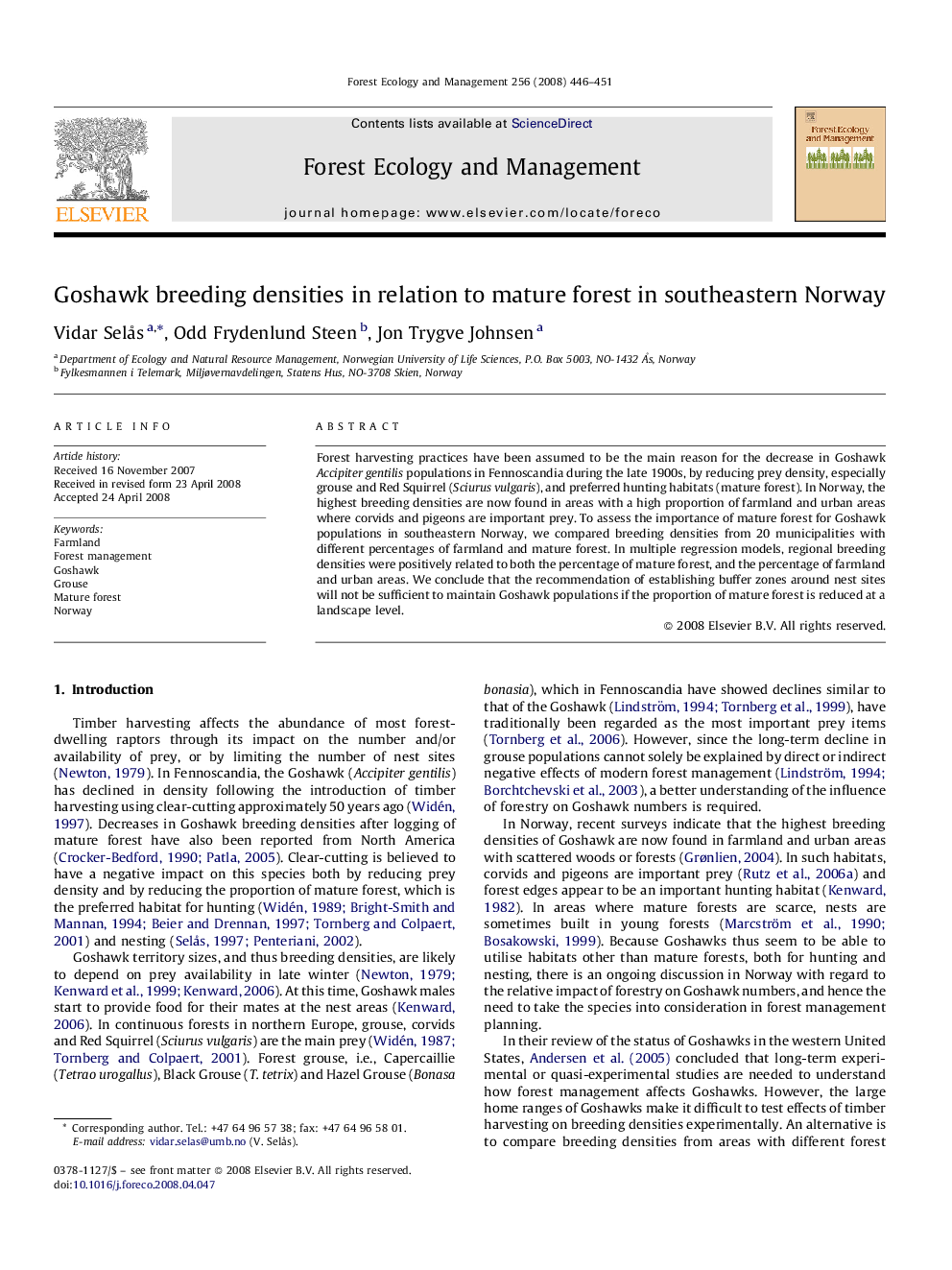| Article ID | Journal | Published Year | Pages | File Type |
|---|---|---|---|---|
| 88905 | Forest Ecology and Management | 2008 | 6 Pages |
Forest harvesting practices have been assumed to be the main reason for the decrease in Goshawk Accipiter gentilis populations in Fennoscandia during the late 1900s, by reducing prey density, especially grouse and Red Squirrel (Sciurus vulgaris), and preferred hunting habitats (mature forest). In Norway, the highest breeding densities are now found in areas with a high proportion of farmland and urban areas where corvids and pigeons are important prey. To assess the importance of mature forest for Goshawk populations in southeastern Norway, we compared breeding densities from 20 municipalities with different percentages of farmland and mature forest. In multiple regression models, regional breeding densities were positively related to both the percentage of mature forest, and the percentage of farmland and urban areas. We conclude that the recommendation of establishing buffer zones around nest sites will not be sufficient to maintain Goshawk populations if the proportion of mature forest is reduced at a landscape level.
